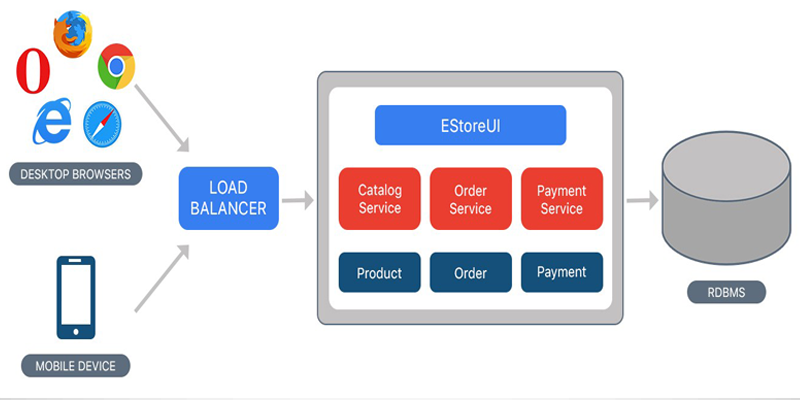Microservices vs Monolith – Which architecture is the best choice for your business? It’s an age-old question. Many debate one way or another, but in this article, we’ll try to answer that question by taking a look at both sides of the equation.
What is Monolithic Architecture
Monolithic architecture is a method that uses one complex system, usually in the form of a single process or program. It’s an extensive and complicated application where all components are tied together to complete a task. Monoliths have been around for decades, but they work best when you know exactly what your users want from your product.
Benefits of Monolithic Architecture
Monolithic architecture has several strengths. One of its benefits is that users do not need a lot of software installed on their computers. As a result, the install process for your product will be faster than if you were using Microservices or other complex architectures. This makes Monoliths ideal for enterprise-level applications because every user only needs access to one executable file to use your application instead of needing multiple files from different programs.
Weaknesses of Monolithic Architecture
One of the main drawbacks to Monolithic architecture is that you cannot scale each component or functional unit without changing your entire code base. This makes it incredibly difficult for developers. If they mistake one part of the application, their error will cascade through every module within your system.
What is Microservices Architecture
Microservices architecture is a newer type of application development that splits up the software into different parts, each with its function. This allows you to scale individual components within your system without modifying other modules for them to work together effectively. Microservices are also easier for developers because they only need knowledge about their specific area rather than knowing how every single part of an application works at once.
Benefits of Microservices Architecture
One of the main benefits of Microservices architecture is that it makes a company’s application more scalable. You can add or remove functionalities without having to make changes throughout your entire codebase. You also have fewer dependencies between separate components, which means fewer potential points for errors within your product.
Weaknesses of Microservices Architecture
When transitioning from Monolithic architecture over to Microservices, many companies run into problems with communication across different modules in their system. This requires developers to change how they work. All modules need consistent contact through APIs rather than seamlessly working together, as was previously done when using a Monolith structure. In addition, microservice architectures often team instead of individual software engineers so
Both Monolithic architecture and Microservices architecture have their benefits for any organization, but there are also downsides to both of them. If you require a new application or product, it’s best to make sure that your developers understand the pros and cons of each structure before moving forward with your plans.




